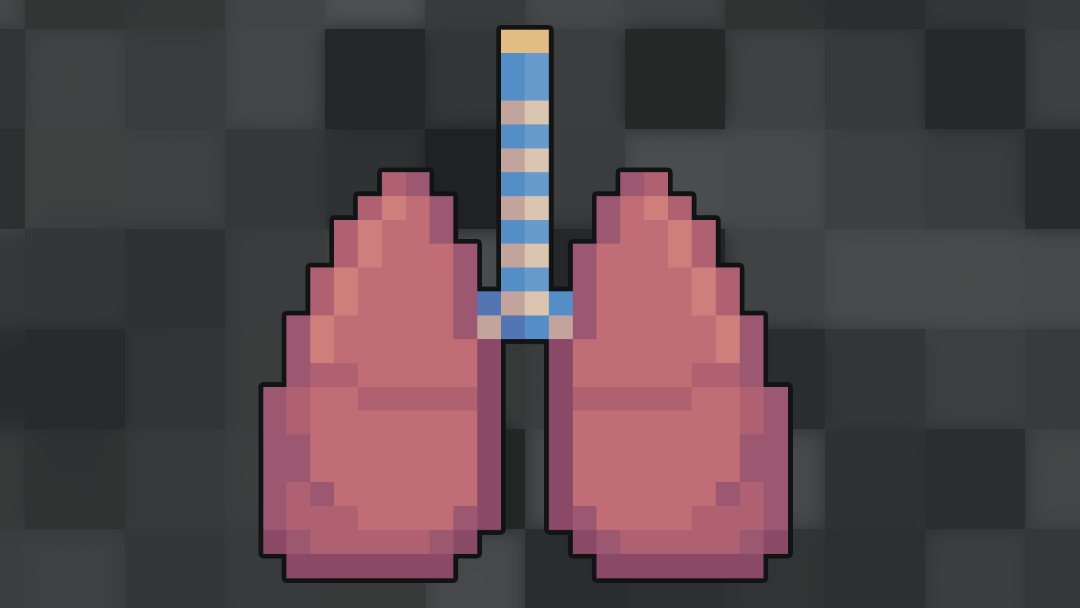- 📖 Geeky Medics OSCE Book
- ⚡ Geeky Medics Bundles
- ✨ 1300+ OSCE Stations
- ✅ OSCE Checklist PDF Booklet
- 🧠 UKMLA AKT Question Bank
- 💊 PSA Question Bank
- 💉 Clinical Skills App
- 🗂️ Flashcard Collections | OSCE, Medicine, Surgery, Anatomy
- 💬 SCA Cases for MRCGP
To be the first to know about our latest videos subscribe to our YouTube channel 🙌
Introduction
Respiratory failure occurs when there is a failure of gas exchange and/or ventilation, leading to abnormalities in arterial oxygen partial pressure (PaO2) and arterial carbon dioxide partial pressure (PaCO2) on arterial blood gas. A variety of conditions can affect the respiratory system and cause respiratory failure.
There are two broad categories of respiratory failure, which reflect different underlying pathophysiological processes:
- Type 1 respiratory failure involves hypoxaemia (PaO2 <8 kPa / 60mmHg) with normocapnia (PaCO2 <6.0 kPa / 45mmHg)
- Type 2 respiratory failure involves hypoxaemia (PaO2 <8 kPa / 60mmHg) with hypercapnia (PaCO2 >6.0 kPa / 45mmHg)
Mnemonic – type 1 and type 2 respiratory failure
An easy way to remember type 1 vs. type 2 respiratory failure when looking at an arterial blood gas is:
- Type 1 respiratory failure affects 1 value (PaO2 ↓)
- Type 2 respiratory failure affects 2 values (PaO2 ↓ and PaCO2 ↑)
Type 1 respiratory failure
Type 1 respiratory failure involves hypoxaemia (PaO2 <8 kPa / 60mmHg) with normocapnia (PaCO2 <6.0 kPa / 45mmHg).
It usually occurs due to ventilation/perfusion (V/Q) mismatch – the volume of air flowing in and out of the lungs is not matched with the flow of blood to the lung tissue.
As a result of the ventilation/perfusion mismatch, PaO2 falls, and PaCO2 rises. The rise in PaCO2 rapidly triggers an increase in a patient’s overall alveolar ventilation, which corrects the PaCO2 but not the PaO2 due to the different shapes of the CO2 and O2 dissociation curves.
The final result is hypoxaemia (PaO2 < 8 kPa / 60mmHg) with normocapnia (PaCO2 < 6.0 kPa / 45mmHg).
Causes of type 1 respiratory failure
Examples of VQ mismatch include:
- Reduced ventilation and normal perfusion (e.g. pneumonia, pulmonary oedema, bronchoconstriction)
- Reduced perfusion with normal ventilation (e.g. pulmonary embolism)
Type 2 respiratory failure
Type 2 respiratory failure involves hypoxaemia (PaO2 is <8 kPa / 60mmHg) with hypercapnia (PaCO2 >6.0 kPa / 45mmHg).
It occurs as a result of alveolar hypoventilation, which prevents patients from being able to adequately oxygenate and eliminate CO2 from their blood.
This leads to PaO2 falling (due to lack of oxygenation) and PaCO2 rising (due to lack of ventilation and elimination of CO2).
Causes of type 2 respiratory failure
Hypoventilation can occur for several reasons, including:
- Increased resistance as a result of airway obstruction (e.g. COPD)
- Reduced compliance of the lung tissue/chest wall (e.g. pneumonia, rib fractures, obesity)
- Reduced strength of the respiratory muscles (e.g. Guillain-Barré, motor neurone disease)
- Reduced respiratory drive (e.g. opioids and other sedatives)
Summary
Table 1. An overview of type 1 vs. type 2 respiratory failure.
| Type 1 | Type 2 | |
| PaO2 | Low | Low |
| PaCO2 | Normal or decreased | High |
| Pathophysiology | Ventilation/perfusion (V/Q) mismatch | Alveolar hypoventilation |
| Conditions |
|
|




